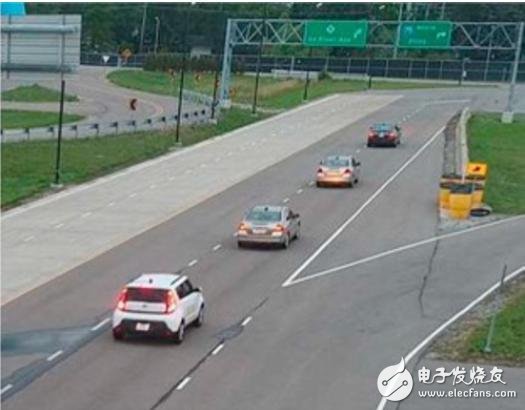According to foreign media reports, the University of Michigan (UM) uses workshop communication (V2V) technology to enable self-driving vehicles to respond to other road users in a timely manner to help them save energy and improve safety, thus verifying the high efficiency of the Internet cruise control system.
The team demonstrated many of the benefits of connected cruise control in drive tests. The team only activated a self-driving car and compared it to other vehicles. Interconnected cruise control can adjust the speed of the car, depending on the information acquired by its workshop communication system. The surrounding vehicles can use the wireless network to share real-time speed and positioning data.

Compared to other widely used adaptive cruise systems, the interconnected cruise control system can track multiple vehicles ahead. The road test at the University of Michigan demonstrates how the system and the communication between the autonomous vehicle and the conventional vehicle can help to avoid "traffic wave". In this scenario, the front-most car will trigger the "braking and re-acceleraTIng" chain reaction of other vehicles. When a self-driving vehicle with interconnected cruise control takes a brake, its gravity value is reduced by 60% compared to a conventional manned vehicle.
In the transition from braking to accelerating, the energy-saving efficiency of self-driving vehicles equipped with V2V reached 19% compared to non-interconnected and self-driving vehicles.
If the on-board sensor is the sole source of information for a self-driving vehicle, when the current vehicle suddenly takes a braking operation, the response time of the vehicle is extremely short, and it is difficult to avoid a potential collision accident, which is almost the same as the performance of a conventional vehicle. The University of Michigan’s R&D team performed a series of V2V interconnected autonomous driving vehicle tests that received information on the motion of vehicles in front of them and received information on up to six vehicles.
The research team also found that V2V autopilot algorithms can achieve energy savings compared to sensor-based traditional algorithms in stop-and-go traffic conditions. Due to the relatively flat speed, conventional vehicles located behind self-driving vehicles can also achieve energy savings of 7%.
Compared with traditional engineering and business education projectors, home projectors are more compact, practical and entertaining, and projection technology is more suitable for home life and entertainment scenes
Features
1. Large screen: The size of traditional LCD TVs is mostly between 40-70 inches, while home projectors can easily project 100-150 inches of screen content.
2. Diverse uses: Home projectors are mostly equipped with intelligent systems, which contain a large number of film sources. In addition, the projector can also be connected to different devices through different interfaces, such as game consoles, computers, U disks, etc. Only one machine can realize online drama, listening to songs, games, office and other functions
3. Diffuse reflection eye protection: The home projector uses the principle of diffuse reflection to form images, which is less harmful to the eyes than the LCD screen.
4. Convenient to move: The home projector is compact, light in weight, flexible in movement, and used in a variety of scenarios
Home Projectors,Production Projector,Home Theater Projectors,Bluetoth Battery Projector
Shenzhen Happybate Trading Co.,LTD , https://www.happybateprojectors.com
